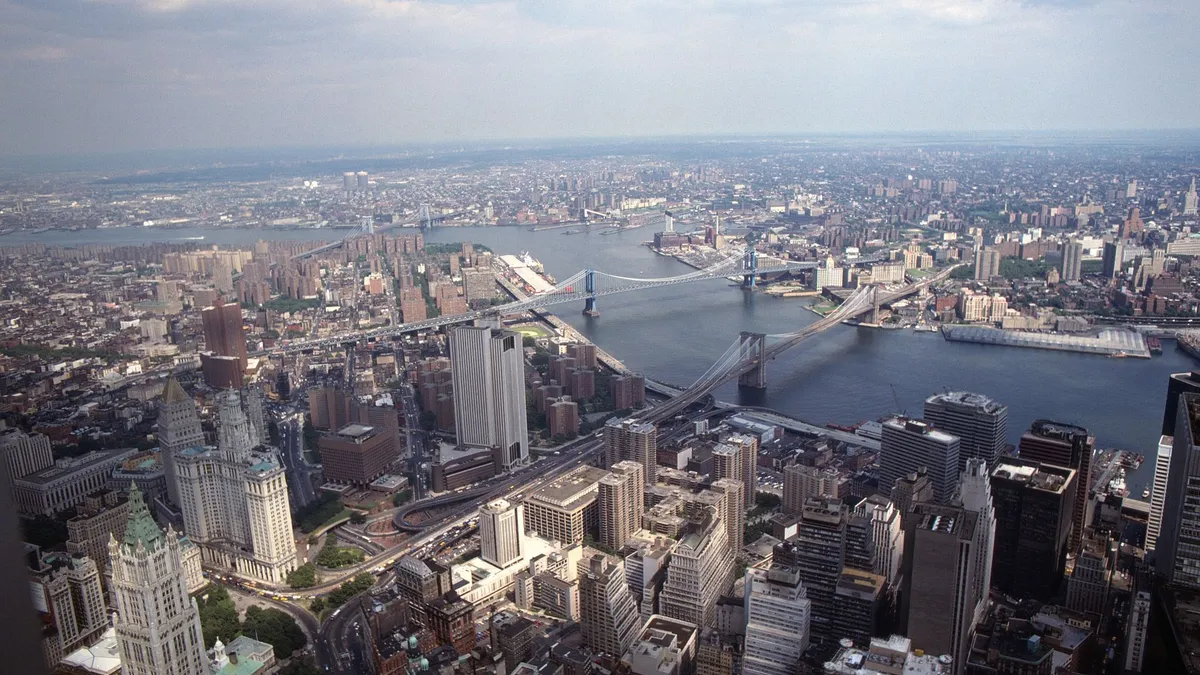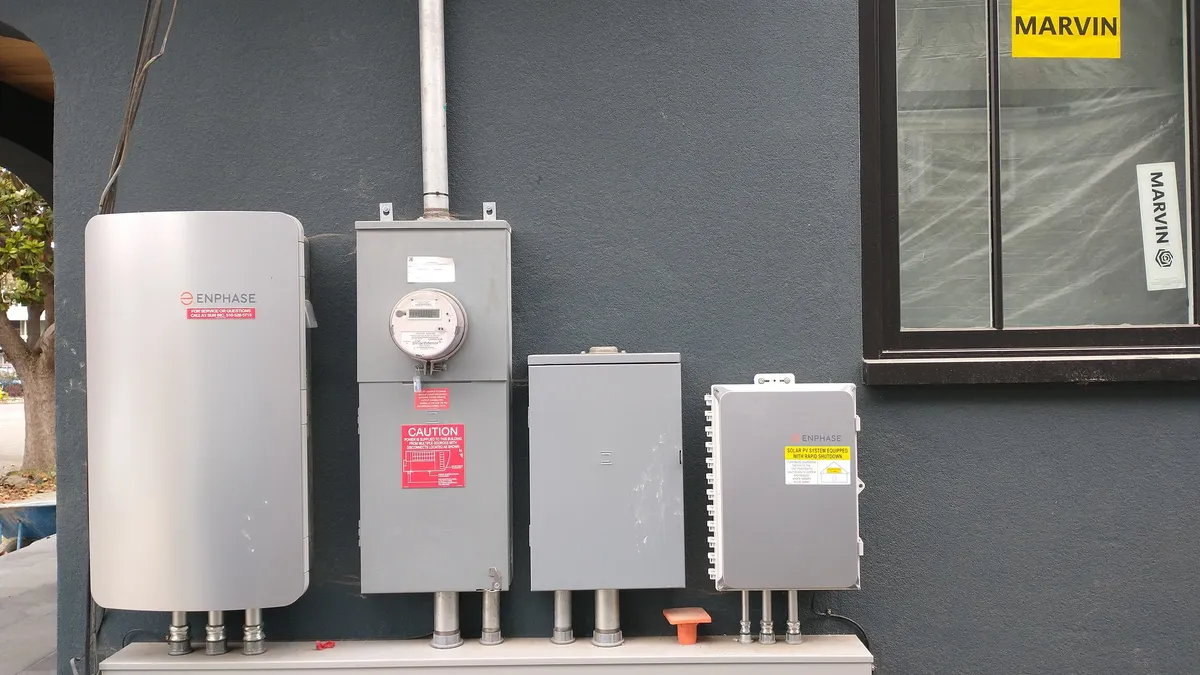Consolidated Edison's Brooklyn-Queens Neighborhood Program can be called many things: successful, innovative, groundbreaking or grid-edge. Just don't call it a "non-wires alternative."
Unveiled several years ago, the utility deferred a $1.2 billion substation upgrade by contracting for 52 MW of demand reductions and 17 MW of distributed resource investments. The strategy involved harnessing a range of distributed resources and efficiencies rather than spending ratepayer funds on traditional utility solutions (typically wires).
The project was successful, and last week state regulators authorized its extension. Now the utility is bringing the same approach to bear in new neighborhoods. But somewhere in the midst of planning, ConEd officials became aware that for your average consumer, NWA doesn't mean non-wires alternative: more likely, it refers to the mid-80s hip-hop group that popularized gangsta rap.
It's tough to imagine mistaking one for the other, but just to be on the safe side, Matthew Ketschke, vice president of distributed resource integration for ConEd, now touts the benefits of the utility's non-wires solutions (NWS).
"We operate a very large, complex network system that has restrictions that begin to show up in different places as new customers add load," Ketschke said. "And in areas where we're seeing restrictions, we are trying to run similar types of non-wires solutions programs as BQDM."
ConEd has recently published two new solicitations for NWS, asking prospective business partners to propose installations that could include solar panels, fuel cells, energy efficient equipment, batteries and other distributed energy resources.
While energy efficiency is typically the fastest demand management strategy to roll out, non-wires approaches to grid limitations are usually a range of resources that hinge heavily on the time and duration of peak demand.
The Brooklyn Queens Demand Management project focused on a constraint at the utility's Brownsville substations, which is a long-duration peak, from about noon to midnight. Solar energy is helpful in the early hours, and then lighting programs, generation and other resources kick in.
"Whether it's efficiency or customer-side generation or storage, you really need to look both at the capacity it can supply and the hour it supplies it," said Ketschke. "Each of the resources has an amount of capacity it can supply and the hour time-period that it supplies. Not all resources are created the same."
By summer 2018, ConEd will have contracted for more than 52 MW of non-traditional solutions — and it did so with funds left to spare. The program was slated to end next year, but the Public Service Commission extended it this month, allowing the utility to obtain additional demand reductions and defer additional traditional infrastructure investments, without any additional funding.
In approving ConEd's request to extend BQDM, PSC Chair John Rhodes called it "one of the best examples of the energy reforms underway in New York."
"Things have gone very well, with both efficiency and customer-sited generation programs we've engaged in," said Griffin Reilly, section manager of targeted demand management for ConEd. "We had $50 million remaining and what the commission has allowed us to do is spend all of the original funding and move our asset deferral out as far as we possibly can."
The plan had been to transfer some load away from the BQDM pocket to another nearby substation, which would have been equipped with a new transformer. Now, ConEd thinks it can continue the BQDM program and defer that project until 2021.
There have been some questions about the economics of BQDM: Greentech Media published an opinion piece by Peak Power's Ben Pickard, arguing that new load forecasts mean the strategy is not saving as much as it was initially expected — and could actually leave New Yorkers on the hook for nearly $1 billion in additional costs. Pickard filed similar comments with the Public Service Commission, drawing a response from the utility and regulators.
In its order extending BQDM, regulators wrote the commission "does not agree with Peak Power’s characterization of ConEd’s reporting on the BQDM Program as being not transparent or that this proceeding lacks a record to support the Company’s proposal.
"A number of people respectfully disagree with him, including our state regulator," Ketschke said. "The BQDM project has been one of the model projects around the industry, and how utility companies will begin to consider traditional infrastructure and customer sited gen in the mix of how we meet our obligations."
Expansion
Separate from the PSC's extension of BQDM, Consolidated Edison wants to expand the approach. Last month, the utility wrapped up the first round of solicitations for energy solutions in neighborhoods on the west side of Midtown Manhattan, northern and western Brooklyn, and northern Queens.
The areas are growing economically and require more electric capacity, but instead of looking to traditional solutions ConEd is attempting to reduce demand about 30 MW. All total there will be three rounds of solicitations for seven projects. The first round just finished up in June, and the others will roll out this summer and can be found here.
ConEd identified its Columbus Circle Network as a candidate for a potential non-wires alternative solution. The network is supplied by ConEd’s West 42nd St. No 2 Substation, and according to the request for proposals, a reduction of 4 MW by summer 2021 will potentially help address the overload.
"The traditional solution is to perform feeder upgrades," according to the RFP. "Reducing load at customer
locations in the Network through implementation of DERs could allow for potential load relief."
At Columbus Circle, the network has an overload period of 2 p.m to 7 p.m., with a 6 p.m. peak.
ConEd also identified its Hudson Network as a candidate for a potential non-wires alternative solution. The network is supplied by the West 50th St Substation, and a reduction of 7.1 MW by summer 2021 is needed.
Hudson has an overload period from 1 p.m. to 8 p.m., and peaks at 5 p.m.
Similar to the BQDM project, ConEd has developed estimates of what infrastructure can be deferred by contracting for NWS, but the utility is not sharing them so as "not to set a market floor."
"Part of this is to get the market to provide the lowest-cost solution for ratepayers," Reilly said.
Ketschke said the utility now fields questions frequently, from utilities around the nation and world. Consolidated Edison has changed the way it considers the need for infrastructure projects, and other power companies are considering the same route.
"There are going to be a lot of times when traditional infrastructure is the lowest cost, best alternative, and we will build traditional infrastructure," said Ketschke. "And there will be other times when customer-side solutions and a non-wires solution will be the best solution, and we'll go that way."






















